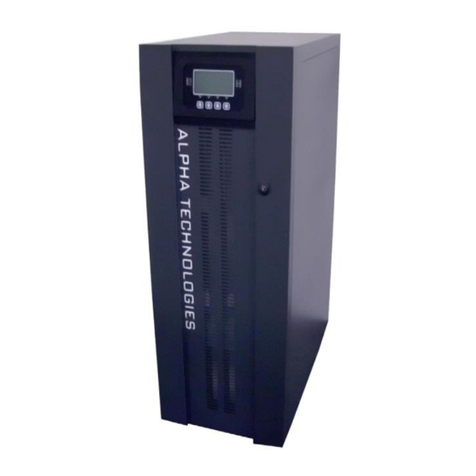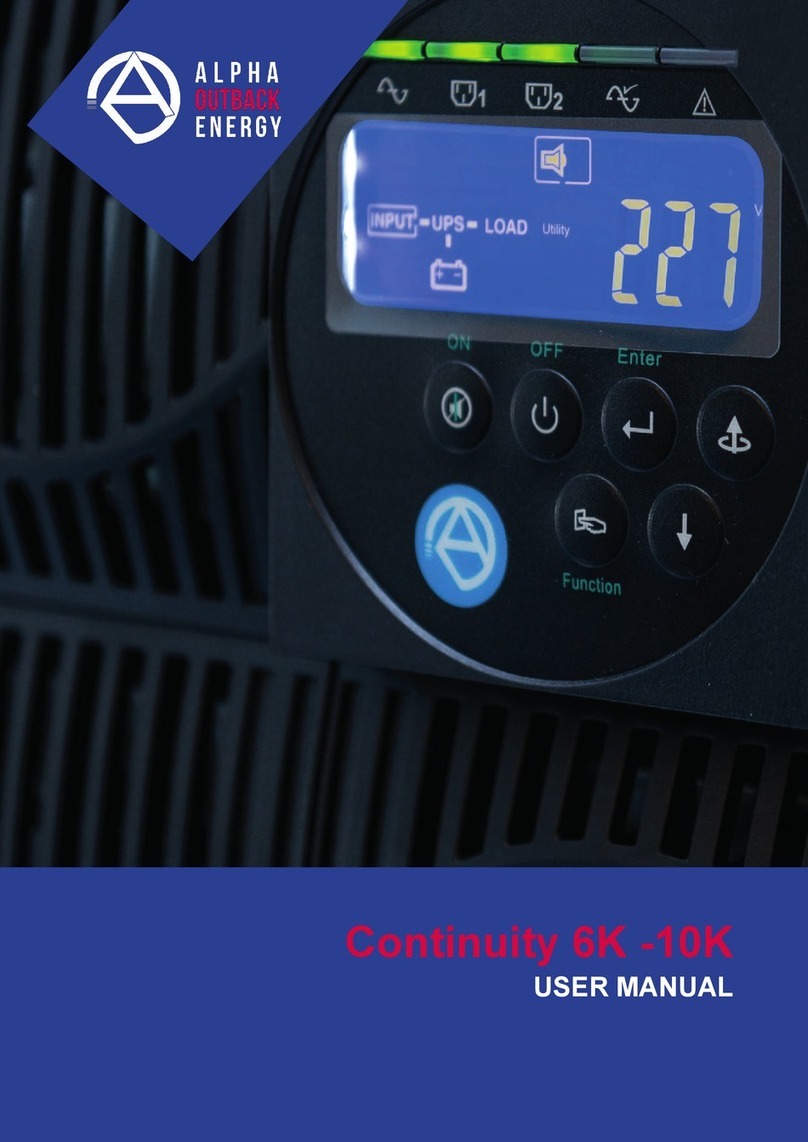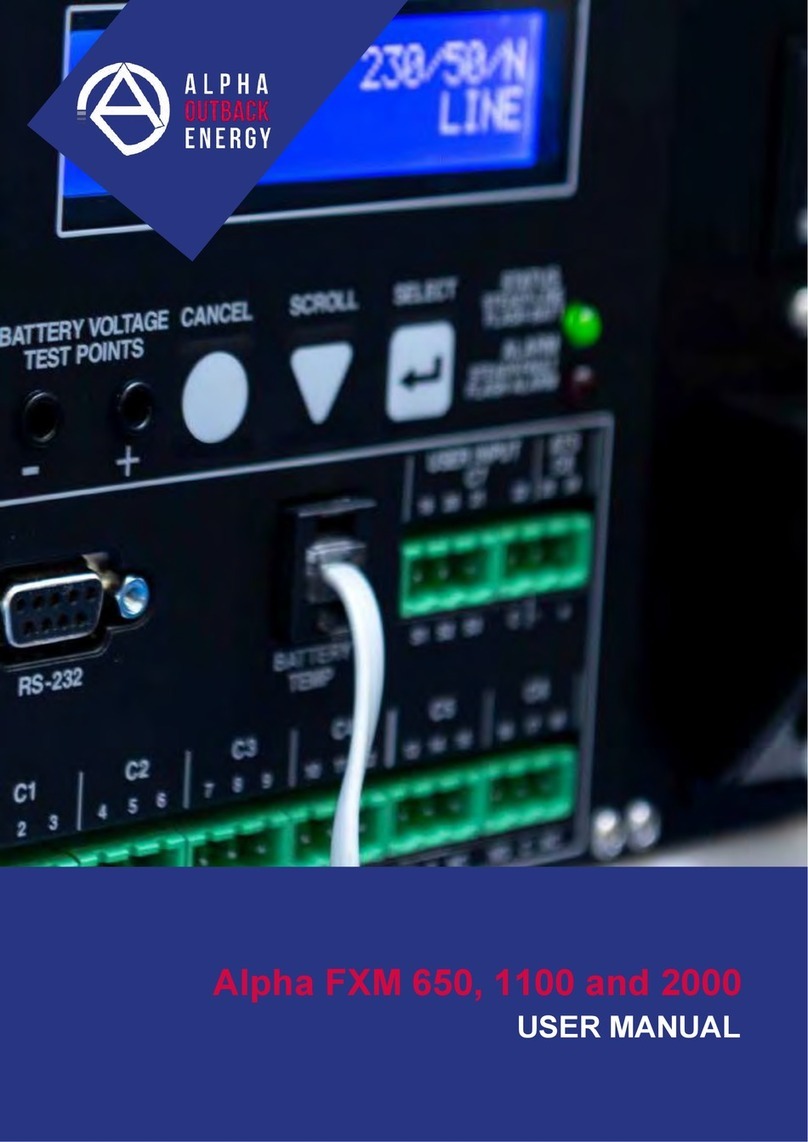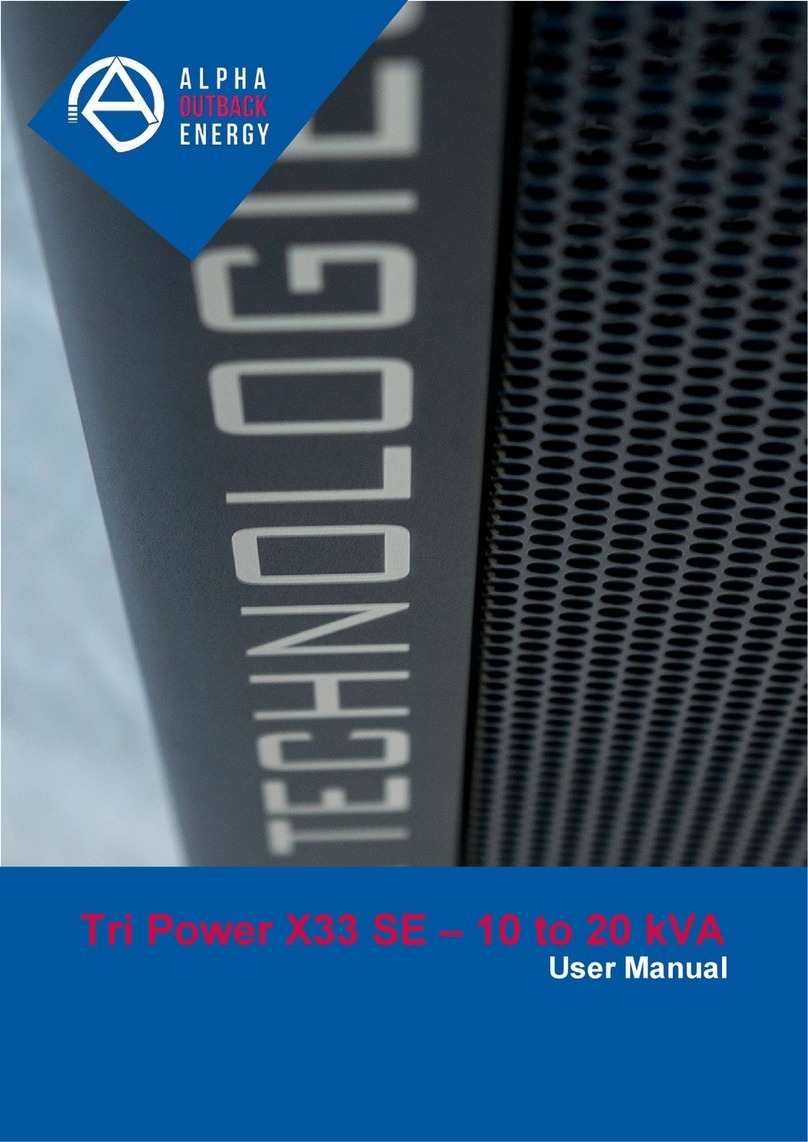
1. Safety Instructions and Storage/ Battery Care
1.1. Safety Instructions
SAVE THESE INSTRUCTIONS.
This manual contains important instructions that should be followed during
installation and maintenance of the UPS and batteries.
1.
Do not open the case as there are no serviceable parts inside. Opening the
case will void your warranty and introduces the risk of electric shock.
2.
Do not try to repair the unit yourself. Doing so will void your warranty. Contact
your local supplier for repairs.
3.
If liquids are spilt onto the UPS or foreign objects dropped into the unit the
UPS could be damaged, users could be subject to electric stock, and the
warranty will become null and void.
4.
Do not install the UPS in an environment with sparks, smoke, or hazardous
gas.
5.
This UPS is equipped with an EMI filter. To prevent potential leakage current
hazards ensure that the AC mains supply is securely grounded. Because of
small leakage currents generated by the EMI filter in the UPS it is necessary
to double check that the ground wire of the UPS is properly grounded before
connecting the UPS to the AC mains
6.
This UPS is designed to be installed and commissioned in a sheltered,
controlled environment as follows:
Ensure that the UPS is installed within the proper environmental range.
(0-40°C and 0-90% non-condensing humidity). High ambient
temperature reduces battery life.
Do not install the UPS in direct sunlight. Your warranty may be void if
the batteries fail
Do not install the UPS in an inflammable or otherwise
hazardous environment.
Avoid vibration and areas subject to physical impact.
Avoid any area with sparks.
Dusty, corrosive, and salty environments can damage any UPS.
Install the UPS indoors as it is not designed for installation outdoors.
7.
To prevent overheating of the UPS keep all ventilation openings free
from obstruction, and do not place anything on top of the UPS. Keep the
UPS rear panel 20 cm away from the wall or other obstructions.
8.
Install the UPS in a ventilated area, ideally exchanging 5 m3 of air per
hour, because the chemical reaction during battery charging causes
trace gas production. If the batteries suffer breakage electrical arcing
could occur in the UPS interior.
9.
If the product emits a strange noise or smell please immediately stop using
the product and contact your dealer for maintenance.
10.
Always switch off the UPS and disconnect the batteries when relocating the
UPS. Be aware that, even when disconnected, charged batteries present
a possible electric shock hazard.
11.
The UPS should be recharged every 2-3 months if unused. If this is not
done then the warranty will be null and void. When installed and being
used the batteries will be automatically recharged and kept in top
condition.
12.
Make sure that the AC utility outlet is correctly grounded.
13.
Ensure that the input voltage of the UPS matches the utility supply
voltage. Use a certified input power cable with the correct plugs and
sockets for the system voltage.
14.
To ensure safety in all applications where a UPS is hard wired to the
electrical supply, ensure that the system is installed by a qualified
electrical contractor.
15.
The UPS has its own internal energy source (battery). Should the
battery be switched on when no AC power is available there could be
voltage at the output terminals.
16.
Make sure that the AC utility outlet is correctly grounded
17.
Install the UPS away from objects that give off excessive heat and areas
that are excessively wet.
Page 2 to 47 Page 3 to 47



































